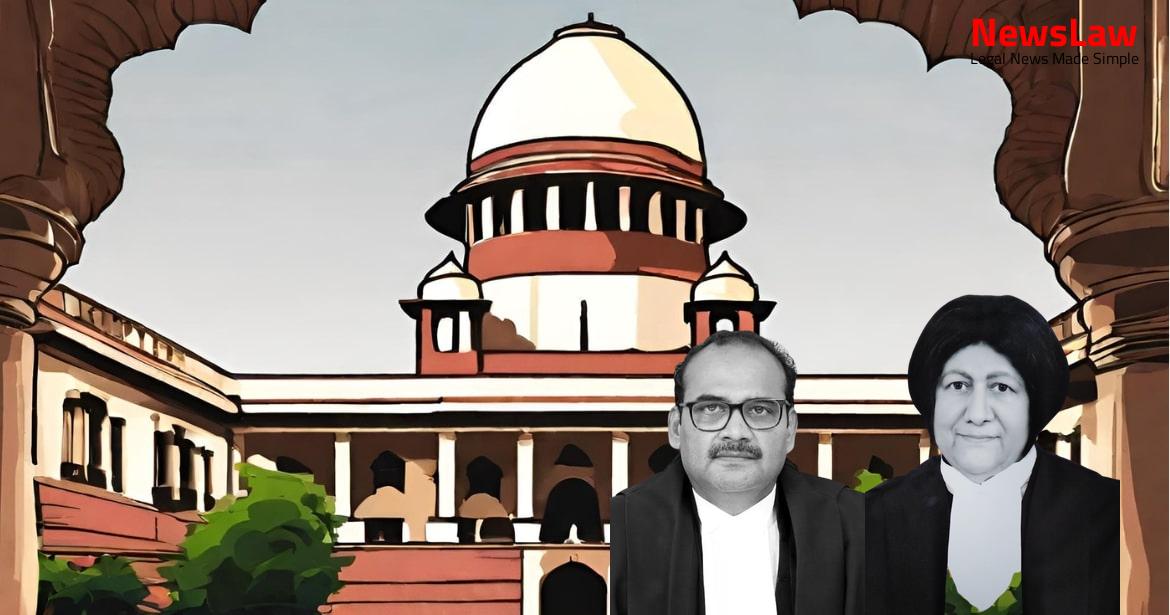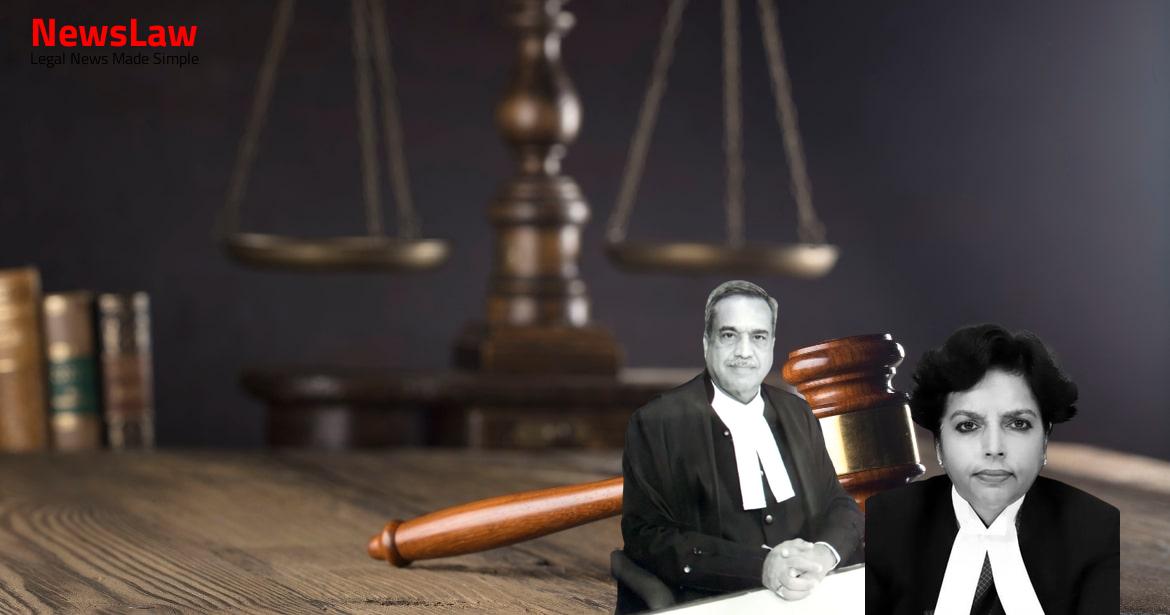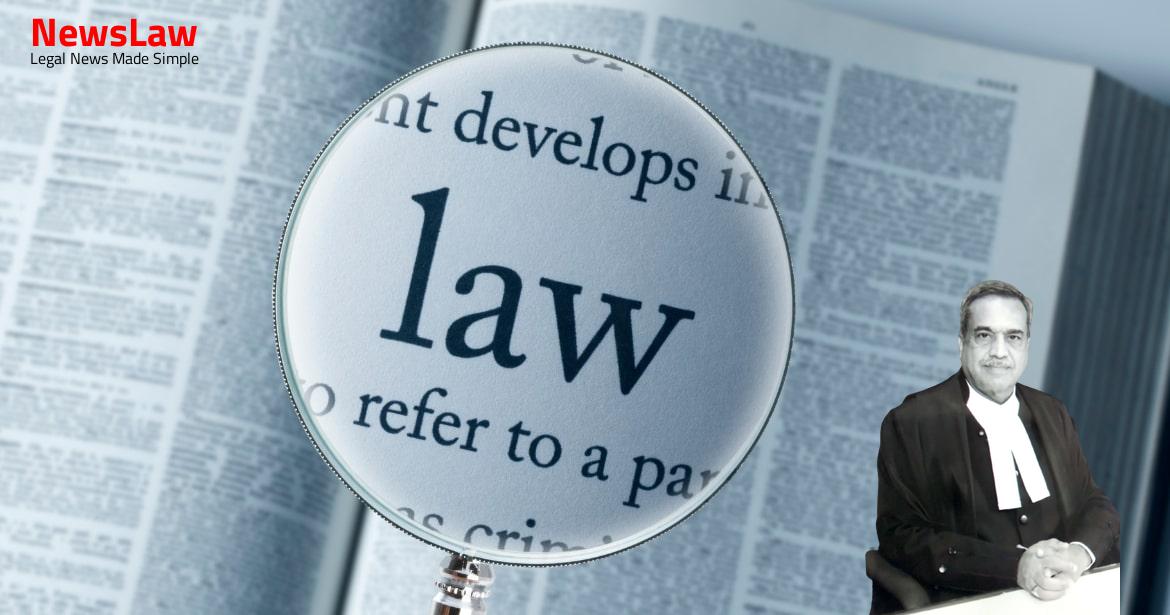Explore the intricate legal analysis undertaken by the court in a recent criminal case, focusing on witness testimonies and medical evidence. The court delved into the reliability of the prosecution’s case, scrutinizing the witness accounts and medical reports to establish the guilt of the accused. This case summary sheds light on the court’s meticulous examination of crucial evidence in criminal trials.
Facts
- The appeal was pending before the High Court, but five out of six accused persons died during this period.
- The appellant and other accused were tried by the Sessions Court.
- After returning to the place of occurrence, they found Brahmapal Singh dead.
- Six witnesses were examined by the prosecution including the Investigating Officer and doctors.
- Rajkumar Singh promised to pay the price of the buffalo to Brahmapal Singh after Holi.
- Rajkumar Singh, along with other accused persons, were charged under various sections of the IPC.
- The High Court dismissed the criminal appeal filed by the convicted persons.
- Incident involved the use of rifles and guns by the accused resulting in injuries and death.
- The complainant and other witnesses fled to a house to escape the firing.
- The appellant was the only one who survived among the accused after being taken into custody.
- The Trial Court found the testimonies of the eye-witnesses reliable.
- The Prosecution witnesses provided evidence of motive to kill the deceased.
- All accused individuals were armed with deadly weapons and intended to kill the deceased.
- Multiple gunshots were fired at the deceased, resulting in 16 bullet injuries.
- No major contradictions or conflicts were found in the witness testimonies or medical evidence by the High Court.
Also Read: Analysis of Financial Statements as Acknowledgment in Limitation Act Case
Arguments
- Mr. Sinha argued that the prosecution witnesses ran away after the first shot was fired and did not see who fired, but heard gunshots.
- No weapon alleged to have been used by the Appellant was recovered or produced by the police.
- Injuries on the deceased and the injured witness were gunshot injuries, no injury from the rifle.
- No recovery of empty cartridge or bullet from the site, no scattered gun pellets recovered.
- No witness from the village despite its population, lack of testimonies on which accused fired apart from Rajkumar Singh.
- No recovery of the weapon of crime, lack of bullet rifle injury mark on the deceased’s head.
- Conviction by the Trial Court based on assumption/presumption, minor contradictions not significant.
- No eye-witness against Karan Singh, reliance on overwhelming corroborative evidence.
- Recovery of two articles by the police, main injured witness did not see the Appellant at the spot.
- Allegations that injured witness is a relative of the Appellant, witnesses did not see other accused firing.
- Doubt on whether the bullet hit the deceased, argument against the severability doctrine in witness statements.
- List of exhibits tendered in evidence.
- Mr. Sanjay Kumar Tyagi, Advocate on Record, representing the State, argued against interference with the concurrent finding of guilt by the Trial Court and the High Court.
- The post mortem examination revealed multiple gunshot wounds on the deceased’s body.
- Injured witness Mahender Singh was medically examined and found to have gunshot wounds and pellet injuries.
- The Prosecution’s case was supported by three eye witnesses and two doctors’ testimonies.
- Although there were minor discrepancies in the witnesses’ accounts, the material particulars were corroborated.
- Mr. Tyagi acknowledged the discrepancies but highlighted that the evidence still conclusively proved the Prosecution’s case.
Also Read: Landmark Legal Analysis in Conviction Appeal Case
Analysis
- In Rohtash Kumar v. State of Haryana, the court held that discrepancies caused by lapses in memory were acceptable, but contradictions were not.
- Shyamlal Ghosh v. State of West Bengal established that minor discrepancies caused by memory lapses were acceptable in court.
- Hanumant case established that an admission made by a person cannot be split up and part of it used against them, it must be used either as a whole or not at all.
- Kuriya v. State of Rajasthan reiterated the principle that an admission must be used as a whole or not at all.
- Rohtash Kumar v. State of Haryana reiterated that an admission must be used either as a whole or not at all to maintain its credibility in demolishing the prosecution case.
- The judgments in Palvinder Kaur and Hanumant cases, relating to confession and admission, were deemed distinguishable on specific facts.
- In Mrinal Das v. State of Tripura, it was established that credible evidence from even hostile witnesses can be the basis of conviction in criminal trials.
- Navaneethakrishnan v. State reaffirmed the importance of every incriminating piece of evidence in a criminal trial.
- Two eye-witnesses confirmed the presence of the Appellant at the place of occurrence carrying a rifle.
- PW3 saw the Appellant Karan Singh fire during the incident.
- The post-mortem examination revealed multiple gunshot wounds leading to fatal injuries.
- The Doctor stated that the cause of death was bleeding and shock.
- The Doctor’s testimony supported the prosecution’s case that all accused persons present had fired their arms.
- Injured witness Mahender Singh did not specifically name the Appellant but two eye witnesses confirmed his presence and involvement.
- Minor discrepancies were noted but overall, PW2 and PW3 corroborated the prosecution’s version of events.
- The prosecution demonstrated the Appellant’s possession of a rifle and participation in the firing incident.
- The necessity to prove the case beyond reasonable doubt was fulfilled by the prosecution’s evidence.
- Concurrent findings of the Trial Court and the High Court were not interfered with
- The length of the trial/appeal process and the potential death of other accused during the appeal were not considered valid grounds for interference
Also Read: Analysis of Territorial Jurisdiction in Arbitration Transfer Petition
Decision
- The appeal is dismissed.
- No grounds for acquittal of the Appellant.
Case Title: KARAN SINGH Vs. THE STATE OF UTTAR PRADESH (2022 INSC 253)
Case Number: Crl.A. No.-000327-000327 / 2022



